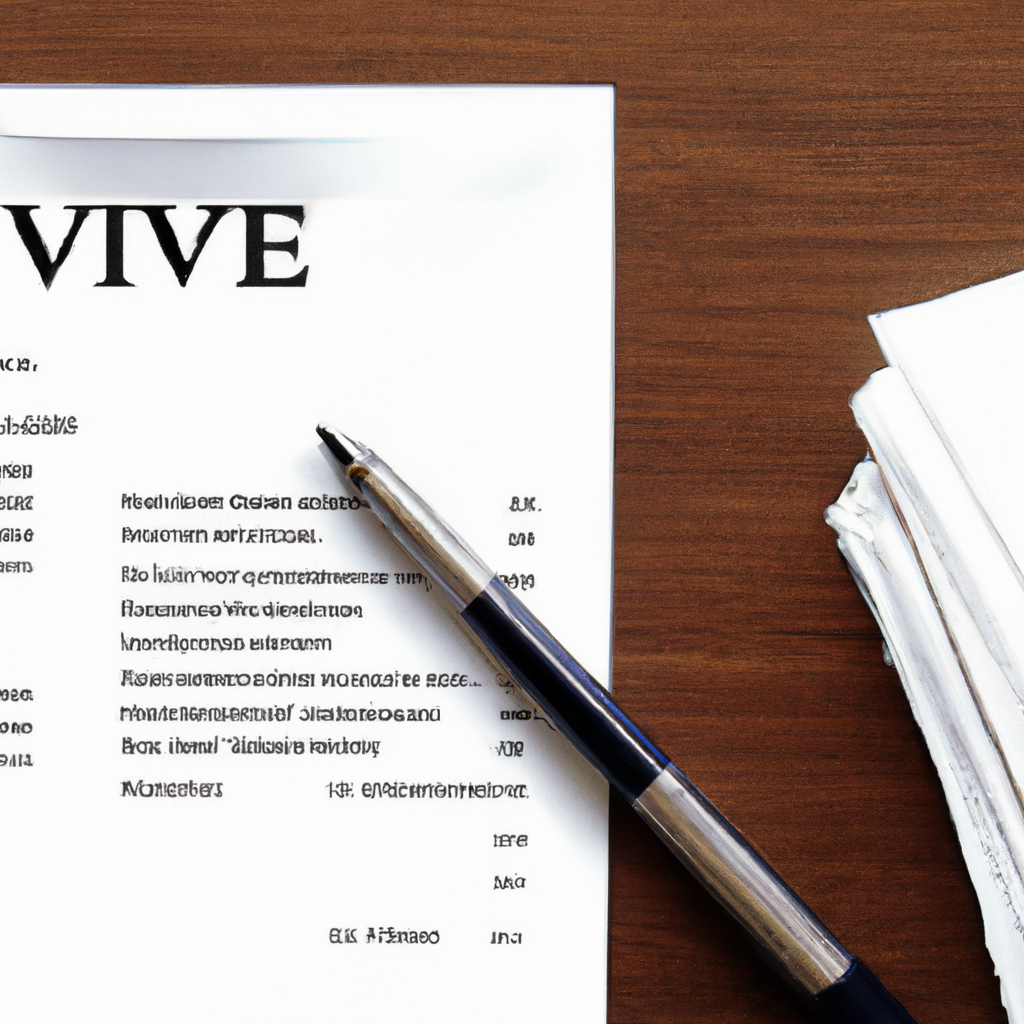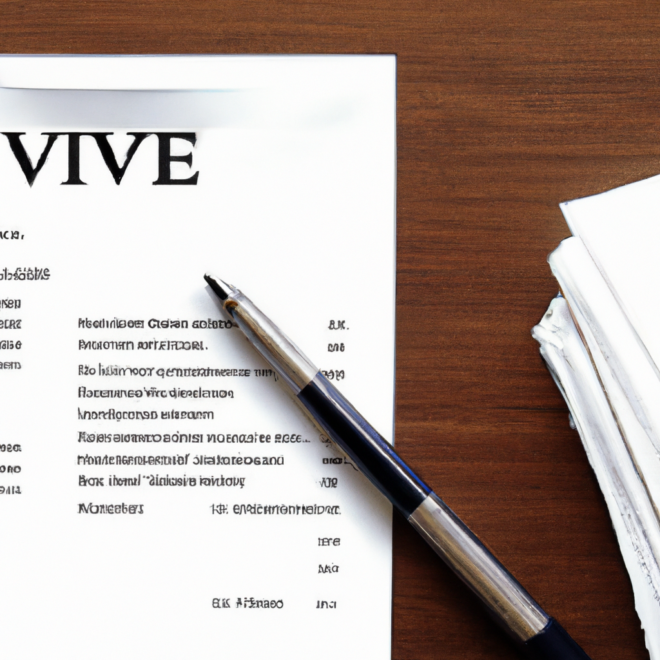If you’ve ever found yourself confused about the distinctions between a CV and a resume, you’re not alone. These two terms are often used interchangeably, but they actually serve different purposes in the job search process. In a nutshell, a CV, or curriculum vitae, is a comprehensive document that provides an extensive overview of your education, research, publications, and professional experience. On the other hand, a resume is a concise summary of your skills, achievements, and work experience tailored specifically for the job you’re applying to. Understanding the differences between these two formats is crucial when crafting an effective application that showcases your qualifications in the best possible way.

Purpose
A CV (Curriculum Vitae) and a resume serve different purposes. The purpose of a CV is to provide an in-depth overview of your academic and professional background, focusing on research, publications, teaching experience, and other relevant details. A CV is commonly used when applying for academic, scientific, or research positions, as well as for grant applications. On the other hand, a resume is a concise summary of your skills, work experience, and qualifications, tailored to highlight your suitability for a specific job. Resumes are typically used when applying for non-academic roles in the corporate world or other industries.
Length
CVs tend to be longer than resumes due to their comprehensive nature. Since a CV includes detailed information about your academic achievements, research projects, and publications, it can range from two to several pages in length. Resumes, however, are usually concise and should ideally be limited to a maximum of two pages. It’s important to be concise and focus on the most relevant information when creating a resume, as employers often spend only a few seconds scanning a resume during the initial screening process.
Content
The content included in a CV and a resume differs significantly. A CV should provide a comprehensive overview of your educational background, research experience, publications, academic honors, teaching experience, conference presentations, and grants or scholarships received. It may also include additional sections such as professional affiliations or memberships. On the other hand, a resume focuses more on your professional work experience, skills, certifications, and achievements relevant to the specific job or industry you are applying to. It typically includes sections such as a career objective, summary of qualifications, work experience, education, skills, and any additional relevant sections.

Format
The format of a CV and a resume also differs. CVs are typically organized in a chronological order, starting with your most recent educational achievements and professional experiences. The order of sections may vary slightly depending on the individual and their field of expertise. CVs often include bulleted or numbered lists to highlight key achievements, while additional sections such as a publications list or a research statement may be included. Resumes, on the other hand, are usually organized in a reverse chronological order, starting with your most recent job experience and working backward. Resumes often utilize bullet points to make information easily scannable and may include a section highlighting relevant skills or certifications.
Focus
A CV focuses on providing a comprehensive overview of your academic and professional achievements, placing more emphasis on research, publications, and teaching experience. It aims to showcase your expertise in a particular field or discipline and is commonly used for academic or research-oriented positions where in-depth knowledge is highly valued. A resume, on the other hand, focuses on highlighting your relevant work experience, skills, and qualifications for a specific job. It is tailored to demonstrate your suitability for a particular role or industry. Resumes place less emphasis on academic achievements and more on practical skills and accomplishments related to the job at hand.
Chronological Order
The chronological order of information in a CV and a resume plays a crucial role. In a CV, it is essential to present your academic accomplishments and professional experiences in a chronological order, starting with the most recent ones. This allows readers to easily track your progress throughout your educational and professional journey. In a resume, the reverse chronological order is commonly used to showcase your most recent work experience first, followed by previous roles and relevant skill sets. This order helps employers to quickly assess your career growth and assess your suitability for the job.
Audience
The audience for a CV and a resume may vary depending on the purpose. A CV is typically aimed at academic institutions, research centers, or potential employers seeking candidates with extensive academic or research backgrounds. The audience for a CV often includes faculty members, hiring committees, and research leaders who are interested in delving into your academic qualifications and achievements. On the other hand, resumes target employers in various industries, ranging from corporations to non-profit organizations. The audience for a resume generally consists of hiring managers or recruiters who are seeking candidates with relevant professional experience and skills for a specific job or role.
Customizability
While both CVs and resumes should be tailored to fit the specific position you are applying for, resumes offer more flexibility in terms of customization. Resumes can be adjusted to highlight the most relevant skills, qualifications, and experiences that align with a particular job posting or industry. You can emphasize different aspects of your background or achievements depending on the requirements of the role. In contrast, CVs tend to be more standardized and comprehensive, focusing on your overall academic and professional profile rather than tailoring it specifically to a job or industry.
Usage
The usage of CVs and resumes also varies depending on the country or region. In many European countries and some other parts of the world, a CV is the standard document used when applying for a job. CVs in these regions are typically more detailed and include additional sections such as personal information, a photo, and sometimes even information about family and marital status. In contrast, resumes are more commonly used in the United States, Canada, and some other countries. Resumes in these regions are usually shorter and more focused on relevant qualifications and work experience rather than including personal details that are considered unnecessary or potentially discriminatory.
International Differences
As mentioned earlier, there are significant international differences in the usage and format of CVs and resumes. In addition to the inclusion of personal information in CVs in some regions, there are other variations as well. For example, CVs in some countries may include a section on language proficiency or voluntary work and internships. In certain countries, it is also common to attach documents such as academic transcripts or recommendation letters to the CV. These variations highlight the importance of researching and understanding the specific requirements and cultural norms for CVs and resumes in the country or region where you are applying for a job.
In conclusion, while both a CV and a resume serve the purpose of presenting your qualifications and experiences, they differ in terms of length, content, format, focus, and usage. Understanding these differences and tailoring your application materials accordingly is crucial in order to effectively showcase your skills and qualifications to potential employers or academic institutions. Whether you are applying for an academic position or a non-academic role, taking the time to create a well-crafted CV or resume can greatly enhance your chances of success in the competitive job market.



